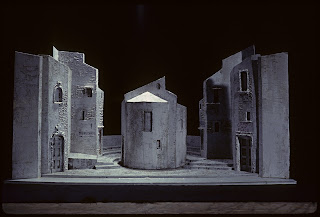AKU TOTAN
karutan yang berlarutan
Sunday, February 8, 2015
Kulat tambah dengan sesemut dan cendawan dalam blog
Sunday, August 7, 2011
pembiakan kulat di blog
Itulah contoh orang yang kurang berjaya.
betapa lama aku tak tengok dan cuci.ceh.
Anyway sebut pasal kulat, dalam bulan-bulan puasa ni sedap gak kalau buat gulai lemak kulat.
Bukan kulat yang kain tu ek.
Kulat hidup yang boleh dimakan tu.
Memang sedap. Aku tak tahu lah kalau kat negeri lain, tapi kat Pahang rasanya kebanyakkan orang tahu dan makan gulai kulat.
nanti aku bagitau macam mana nak buat.
sebab kalau sebut sekarang, perut secara automatik akan merengek macam bayi --"
Monday, March 7, 2011
Presentational & Representational
When we watch a presentation on stage, how do we understand what we are watching? This is an important question – it is the question that is at the centre of the action of representation: someone or something being depicted on stage. (Irwin:2010)
She stated that:
Presentation is-
- the proffering or giving of something to someone, esp. in a formal ceremony.
- the manner or style in which something is given, offered or displayed.
- a formal introduction of someone.
- a demonstration or display of a product or an idea.
- an exhibition or theatrical performance.
Presentational is-
Presentational
eliminates the 4th wall
monologues and soliloquies
frankly scenery
sometimes drops with furniture exposed
lights can be scenes
costumes may or may not be symbolic
sound may be abstract
house can be on sometimes
Representation is:
- the action of speaking or acting of behalf of someone or the state of being represented.
- the depiction or portrayal of someone or something in a picture, on stage or in a work of art.
- the thing esp. a picture or a model that depicts a likeness of someone or something.
Representational is-
Representational
realistic
4th wall
real walls, real doors, real stair cases
lights hidden and “motivated”
house is dark
period costumes
sound is often from life
dialogue is conversational
 A Midsummer Night’s Dream (1983), designed by David Ultz
A Midsummer Night’s Dream (1983), designed by David Ultz Le Misanthrope (1981), designed by Robert Prévost
Le Misanthrope (1981), designed by Robert Prévost
Stages

Sourses:
http://answer.yahoo.com
http://artsalive.ca/collections/imaginedspaces/index.php/en/learn-about/modes-of-representation
www.google.com/images

Monday, February 7, 2011
Genres of theatre
Indian classical dance is a relatively new umbrella term for various codified art forms rooted in Natya, the sacred Hindu musical theatre styles, whose theory can be traced back to the Natya Shastra of Bharata Muni (400 BC)
Nautanki
Nautanki (नौटंकी) is a famous folk theater and operatic drama form, popular in northern India especially in the states of Bihar and Uttar Pradesh . Before the advent of cinema in India, it was the most popular form of entertainment prevalent in these areas.
Pantomime
Pantomime (informally, panto), not to be confused with a mime artist, referring to a theatrical performer of mime, is a musical-comedy theatrical production traditionally found in the United Kingdom, Australia, Canada, Jamaica, South Africa, Japan, India, Ireland, Gibraltar and Malta, and is mostly performed during the Christmas and New Year season.
The telling of a story without words, by means of bodily movements, gestures, and facial expressions
Commedia dell’arte
A type of comedy developed in Italy in the 16th and 17th centuries and characterized by improvisation from a standard plot outline and the use of stock characters, often in traditional masks and costumes.
Italian : commedia, comedy + dell'arte, of the guild, professional (from arte, art, craft, guild).
From Oxford dictionary of dance :
Italian improvised comic theatre popular from the 16th to 18th centuries, whose stock characters, such as Harlequin and Columbine, are familiar to audiences all over Europe. The form, which from the start incorporated many dance-like elements such as acrobatics and pantomime, has provided the inspiration for many ballets, from Petipa's Les Millions de Harlequin (1900), to Fokine's Carnaval (1910), Massine's Pulcinella (1920), and Tetley's Pierrot lunaire (1962).
Physical theatre
Physical theatre is used to describe any mode of performance that pursues storytelling or drama through primarily and secondarily physical and mental means. There are several quite distinct but indistinct traditions of performance which all describe themselves using the term "physical theatre", which has led to a lot of confusion as to what the definition of physical theatre actually is.
sources:
www.answers.com
www.google.com/image













